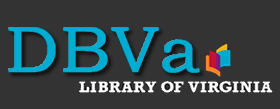CONTENT WARNING
Materials in the Library of Virginia’s collections contain historical terms, phrases, and images that are offensive to modern readers. These include demeaning and dehumanizing references to race, ethnicity, and nationality; enslaved or free status; physical and mental ability; and gender and sexual orientation.
Context
Hampton Normal and Agricultural Institute opened in 1868 near the site of Fort Monroe, which had served as a refugee camp for thousands of enslaved men, women, and children who sought freedom there during the Civil War. The fort and surrounding vicinity were under control of the United States Army, and Major General Benjamin Butler had declared in May 1861 that enslaved people who reached the Union lines would not be returned to their Confederate enslavers. The American Missionary Association opened a school for refugees and hired Mary Peake, a free-born Norfolk woman, to teach. She held her first class on September 17, 1861, under an oak tree that became known as the Emancipation Oak after the Emancipation Proclamation was read there in 1863. The Emancipation Oak can still be found on the Hampton University campus.
U.S. Army brigadier general and Freedmen's Bureau agent Samuel Chapman Armstrong established Hampton Institute to train Black men and women to be teachers and to provide training in trades and industrial skills. The school was open to men and women and became well-known for training educators like Booker T. Washington (1856–1915), who later implemented a similar program of practical training combined with academic instruction as the first president of Tuskegee Normal and Industrial Institute, in Alabama. In 1878, Hampton's mission expanded with the admission of Indigenous students from the western United States. As the school grew, Hampton relied heavily on funding from white northern donors and philanthropists, who often preferred that Black students remain focused on manual training and industrial education with less emphasis on academic classes.
This photograph, taken in 1907, shows young men who were attending class. Many of the classes taught would have been related to trades such as farming, carpentry, harness making, printing, tailoring, clocksmithing, blacksmithing, painting, and wheelwrighting. All male students at Hampton were organized into cadet battalions from 1878 to the 1930s and wore uniforms as part of their training.
Hampton began offering a bachelor's degree program in the 1920s and graduate courses in 1928. It became Hampton University in 1984.
Citation: Students at Hampton Institute, Prints & Photographs, Special Collections, Library of Virginia.
Standards
Suggested Questions
Preview Activity
Look at It: Look carefully at the photo of the four men at Hampton. What aspects of photograph stand out to you? Why?
Post Activities
Think About It: Why do you think a school was established at the refugee camps near Fort Monroe? Consider what you know about life under slavery in Virginia.
Be the Journalist: Imagine you are a journalist in 1907 and plan to interview the men in the photograph. What questions would you ask? Why would you ask those questions? Explain.
